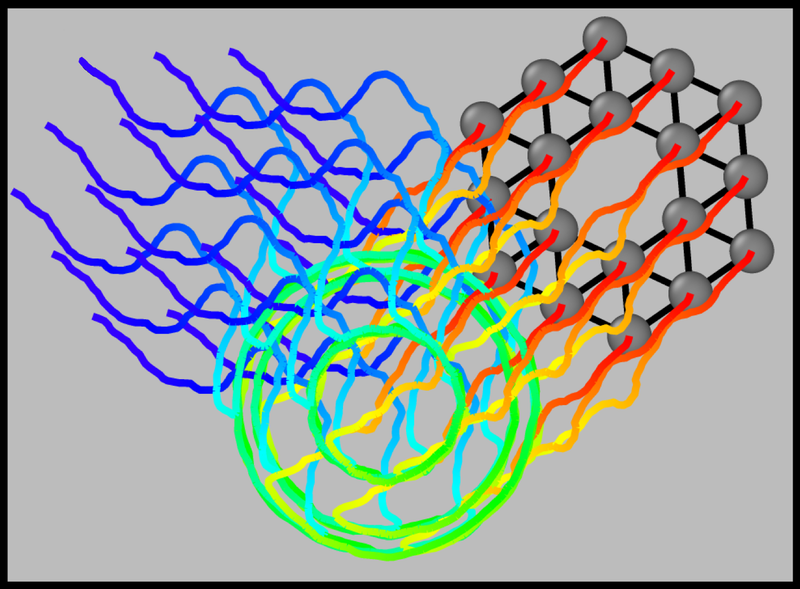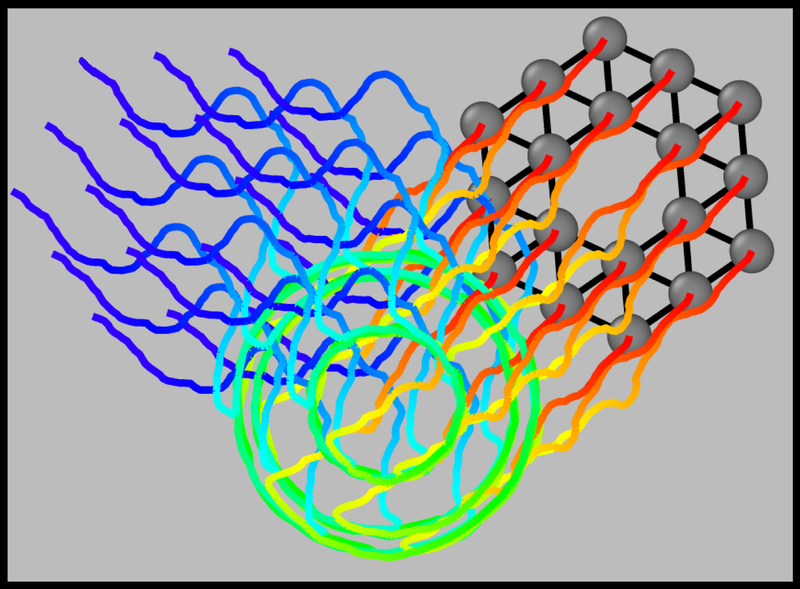Theory Predicts Collective States of Mobile Particles
Collections of mobile, interacting objects—flocks of birds, colonies of bacterial, or teams of robots—can sometimes behave like solid materials, executing organized rotations or gliding coherently in one direction. But why such systems display one kind of collective organization rather than another has remained unclear. Now researchers have developed a theory that can predict the pattern most likely to emerge under specific conditions [1]. The theory, they hope, may be of use in designing living and artificial materials that can autonomously adapt to their environment.
An “active material” is any system made up of interacting objects able to move under their own power, such as animals, cells, or robots. In so-called active solids, a subset of active materials, strong cohesion between neighboring elements makes the collective act somewhat like a solid. Examples include clusters of certain cell types and networks of robots with rigid connections.
Active solids can display several kinds of collective, organized motion, says Claudio Hernández-López, a PhD student at the École Normale Supérieure and Sorbonne University in France. For example, researchers have observed both coherent rotations and coherent translations in collections of microbes from the phylum Placozoa. Existing theories, however, fail to explain pattern selection—why, if several patterns are possible, does one pattern of behavior emerge rather than another?
Hernández-López, along with Gustavo Düring of the Pontifical Catholic University of Chile, and their colleagues ran a series of computer simulations on a model system to explore the kinds of collective patterns that might emerge. In their simulations, each element has a specific position and orientation, both of which evolve under the action of small forces. These forces act to align adjacent elements, keep them spaced at fixed distances, and drive each element forward in the direction it is pointing. The simulations also include fluctuations in the forces (noise), which mimic real-world disorder and which act to disrupt element alignment, randomly changing each element’s orientation.
In one case, the team considered a set of active elements arranged in a triangular lattice with one empty site in the center, so that they formed a ring. Simulations revealed that for strong noise, the orientations of the elements fluctuated in a disorganized phase. But with decreasing noise, the system eventually fell into one of two collective modes—a global rigid rotation in either sense or a linear translation in one specific direction. Over time, the system flipped intermittently between these two patterns.
To model this behavior, Hernández-López, Düring, and their colleagues developed a quantitative theory for systems that act like rigid solids with fixed distances between adjacent elements. They drew inspiration from standard theories of statistical mechanics, which apply to ordinary nonactive materials made up of atoms or molecules. In those theories, a system will choose a collective state that minimizes a quantity known as the free energy, which reflects the probability for the system to find itself in each state and the energetic cost associated with it. In effect, the minimum free-energy state minimizes energy and maximizes entropy.
For the triangular ring system, with a large amplitude of noise, the researchers found that the theory predicts disorganization, as observed in the simulations. With decreasing noise, they found two minima in the free energy, one corresponding to rotations and the other to linear translations, with the translation state having the lowest free energy.
Generally, for a system made of a large number of elements, only the state with the lowest free energy would be observed, but small systems in the presence of environmental noise can frequently reach states that would occur only rarely in large systems. This tendency is reflected in a lower free-energy barrier separating states of different free energies. In the simulations, the ring had only 18 elements, so noise could drive the system over the barrier, and it intermittently visited both states, Hernández-López says.
He adds that the theory goes beyond the specific case of the ring. “This formalism is very general and was put to the test with different modes beyond translation–rotation,” including one that involved compression and rotation. “Overall, we find that the statistical mechanics tools can be used to construct a free energy that determines the behavior of the active solid,” he says.
Silke Henkes, an expert in active materials from Leiden University in the Netherlands, says the work is significant. “Understanding active solids is extremely important if we want to generate new functional materials that can autonomously shape themselves.”
–Mark Buchanan
Mark Buchanan is a freelance science writer who splits his time between Abergavenny, UK, and Notre Dame de Courson, France.
References
- C. Hernández-López et al., “Model of active solids: Rigid body motion and shape-changing mechanisms,” Phys. Rev. Lett. 132, 238303 (2024).





